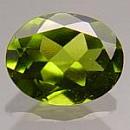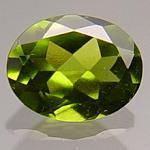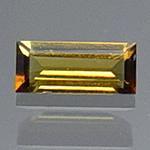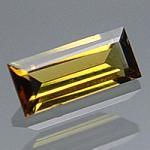|
|
||||||||||||||||
|
||||||||||||||||
|
||||||
|
|
|
|
Vesuvianite
(also
known as Idocrase) |
|
| | |
| Discovered in 1795; IMA status: Valid (pre-IMA; Grandfathered) | ||
|
| ||
|
Chemistry |
|
|
| |
|
Ca19Al4Fe(Al,Mg,Fe)8Si18O7 | |
|
|
Calcium Aluminum Iron Silicate |
|
Molecular Weight: |
1,422.09 gm |
|
Composition: |
Calcium |
28.18 % |
Ca |
39.43 % |
CaO |
|
|
Magnesium |
3.42 % |
Mg |
5.67 % |
MgO |
|
|
Aluminum |
7.59 % |
Al |
14.34 % |
Al2O3 |
|
|
Silicon |
17.77 % |
Si |
38.03 % |
SiO2 |
|
|
Hydrogen |
0.28 % |
H |
2.53 % |
H2O |
|
|
Oxygen |
42.75 % |
O |
|
|
|
|
|
100.00 % |
|
100.00 % |
= TOTAL OXIDE |
|
|
|
||||
|
Classification |
|
|
| |
|
Silicates (Germanates) | |
|
8/C.26-10 | |
|
|
9 : SILICATES (Germanates)
|
|
Related to: |
Vesuvianite Group. Hydroxyl analogue of Fluorvesuvianite. |
|
Members of Group: |
Vesuvianite Group: Fluorvesuvianite, Manganvesuvianite, Vesuvianite, Wiluite |
|
Varieties: |
Beryllian Vesuvianite, Californite, Cerian Vesuvianite, Chrome-Vesuvianite, Cyprine, Frugardite, High-Hydrated Si-Deficient Vesuvianite, Manganoan Vesuvianite, Xanthite |
|
Synonyms: |
Genevite, Idocrase, Jefreinoffite, Jevreinovite, Pyramidal Garnet, Vesuviana, Volcanic Chrysotile |
|
|
|
|
Crystal Data |
|
|
|
|
|
Crystals commonly as short pyramidal to long prismatic crystals, to 15 cm, morphologically complex, with up to 30 forms reported on one crystal; columnar, granular, massive. Californite is found in massive form, not as crystals. |
|
|
Twinned domains observed at a very fine scale. |
|
|
|
|
|
Physical Properties |
|
|
|
|
|
Indistinct on {110}, {100} and {001] |
|
|
Irregular/Uneven, Sub-conchoidal |
|
|
Brittle |
|
|
6.0 - 7.0 |
|
|
3.32 - 3.47 (g/cm3) |
|
|
None |
|
|
Not Radioactive |
|
|
|
|
|
Optical Properties |
|
|
|
|
|
Green, Brown, Colorless to White, Blue (Cyprine), Violet, Bluish green, Pink, Red, Black, commonly zoned; in transmitted light, Colorless to light Yellow, Green, Brown |
|
|
Transparent, Translucent |
|
|
Vitreous, Resinous |
|
|
1.698 - 1.742 Uniaxial ( -/+ ) and Biaxial |
|
|
0.0040 - 0.0060 |
|
|
Strong; 0.019 - 0.025 |
|
|
Weak; O = colorless to yellowish, E = yellowish, greenish, brownish |
|
|
|
|
|
Occurances |
|
|
|
|
|
Geological Setting: |
In skarns formed during contact or regional metamorphism of limestones; in garnetized gabbros, mafic and ultramafic rocks, and serpentinites; uncommon in alkalic igneous rocks. |
|
Common Associations: |
Grossular, Diopside, Wollastonite, Epidote, Scapolite, Spinel, Calcite |
|
Common Impurities: |
Fe, Be, B, F, Cu, Li, Na, K, Mn, Ti, Cr, Zn, H2O |
|
Type Locality: |
Monte Somma, Somma-Vesuvius Complex, Naples Province, Campania, Italy |
|
Year Discovered: |
1795 |
|
View mineral photos: | |
|
|
|
|
More Information |
|
|
|
|
|
| |
|
|
|
|
There
are many sources of Vesuvianite such as Asbestos, Quebec, Canada; California,
Colorado and the New England region of USA; Mt.
Vesuvius, Italy; Ural Mountains, Russia, Switzerland, Tanzania and Kenya.
However, there are only a few sources of gem quality crystals. A small amount
of gemmy material has come from Asbestos, Quebec, Canada.
Recent finds in Tanzania and Kenya have brought some
very nicely colored gems to the market. One source of
material is from California,
USA and has been nick-named Californite
or California Jade. This bright green opaque to translucent
material comes from near Happy Jack mine, Siskiyou County and near Pulga, Butte County, California. |
|
|
||||||||||||||||||||||||||||||||||||||||||||||||||||||




